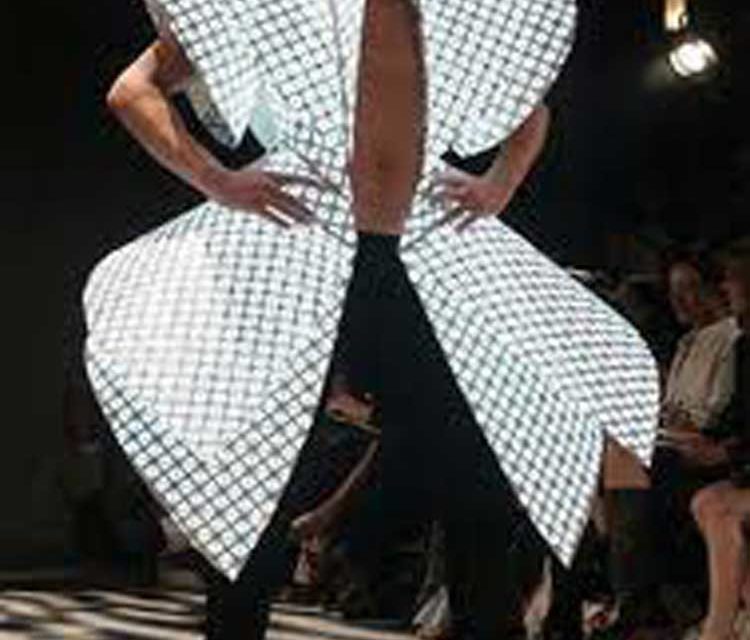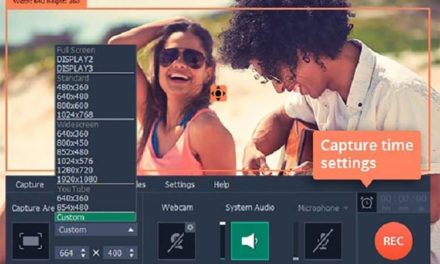The Changing Face of Fashion: The Advent of IT in Fashion
According to Karl Lagerfeld, fashion is ´Transient, dangerous and unfair´. Yet billions of pounds are spent every year in marketing every facet of fashion from the fundamental to the fairytale in an attempt to whet the public’s appetite for more retail sustenance.
From the very humble beginnings of the world´s first-ever model (Marie Vernet Worth, an assistant to her fashion designer husband Charles Worth, in 1892), modelling was not considered to be a respectable profession.
That was until the first model agencies began to spring up in London and Paris in the 1920s, reinforcing acceptance within the industry, and opening a gateway for the then, short stocky models (favoured by the likes of Cristobal Balenciaga et al), and paving the way for household names such as Lisa Fossagrives, Janice Dickinson, Twiggy and the ´Supermodels of the 90´s, not to mention the current perennial industry darling, Ms. Moss and the increasing incidence of today´s ´celebrity´ model (Originated from Anna Wintour of Vogue U.S.A fame).
Add to this, one Elanor Lambert´s attempt to produce a ´Press orientated fashion event´ in 1943 for department store Wanamaker’s in New York City, which has progressed to the global super event we know as Bryant park Fashion Week (Or Mercedes Benz Fashion Week). A far cry from the humble beginnings of the ´Fashion Parades´ in the Paris couture salons of 1855
If the future of modelling looks promising for all types of individuals, then so does the advent of marketing.
Brand Recognition is Still the Live Fashion Events
For many fashion consumers, the most powerful medium for advertisements and brand recognition is still the live fashion events ´A civilised assemble of people and places to create emotive acknowledgments´. These ´shows´ can take many forms from the basic to the brilliant. One such industry visionary was the late Lee ´Alexander´ McQueen, who could certainly utilise the spectacle of the event.
In 2005, McQueen staged a human chess game ´Checkmate´ as his runway show. As a disembodied robotic voice called out the moves, models were moved and sacrificed in what could be construed as a commentary on fashion, on modeling, on art or on any number of other things.
Deeper meanings aside, the chess game was the perfect backdrop for McQueen’s collection of Alice-In-Space-Odyssey-Wonderland garb. From the gorgeous gowns to the flirty cocktail dresses to the sky-high hair and theatrical score, the show was yet another example of McQueen’s unique ability to turn a fashion show into a real show.
Then, McQueen’s 2006 show with the jaw-dropping Kate Moss hologram projection showcased the potential for theatrical flair and the combination of all creative elements from all disciplines of design.

Kate Moss – Hologram
Weird Science
One of McQueen’s last ever runways shows ´Weird Science´ included models clad in plain white dresses being spray-painted by mechanical robots on a moving runway. Sheer spectacle, sheer McQueen.
The marketing and brand development is further being enhanced away from the live event into a world showcasing the harmonic marriage of fashion, retail and Information Technology.
The advent of ´Sci Fi´ virtual dressing rooms allows the at-home shopper to virtually try on dresses and other fashions online. This allows the consumer to gauge if the style and the fit are an appropriate match before adding it to the virtual shopping cart of a web store. One of the first department stores in the world to utilise this was Macy´s of New York City in 2010.
The robotic virtual dressing room prototype of 2010 is capable of changing into 2000 body types. The ´Fits. Me´ program requires various measurements in order to accurately present the shopper with a robotic body style match. Once the match is made, the consumer can virtually try on different sizes of clothes to determine the best fit by entering in body measurements
In 2006, ´Eye magnet´ launched an innovative method of utilizing motion detectors to create a touch-free screen. Using that technology, they were able to create a virtual dressing room for Haldenstein’s retail shop in New Zealand in 2007.
A plasma or rear projection TV is needed to display the store’s inventory.
Then, acting on the concept of a motion detector, a web camera is used to place the consumer into a virtual dressing room, thereby turning the monitor into a digital mirror. Using hand motions, a consumer can wave different apparel items onto the screen to, virtually, try them on. A hand motion can add items to a virtual shopping cart that tallies the items and totals it on the screen. One more wave of the hand lets the consumer text a photo of the virtual outfit to a cell phone.
First Online Web Cam Virtual Dressing Room
The first online webcam virtual dressing room was introduced by Zugara in June 2009. Tobi.com was the first online retail store to launch the Fashionista product in November 2009, which allows at-home consumers to virtually try on clothes on their own beings using a webcam.
The Fashionista software was based on the Webcam Social Shopper software created by Zugara. In order to use the Fashionista program, an online shopper needs to print out a marker and then follow the online steps to align the actual position with the webcam so that the clothes are sized correctly on the monitor.
Subsequent versions of the Webcam Social Shopper software removed the need for a marker and instead, used facial tracking to align subject positioning with the webcam.
Zugara also released a streaming reality program called ZugSTAR which can be integrated with the Fashionista program. The streaming capability allows virtual contact between two people so that they can, in essence, shopping together in a virtual world regardless of their real-life locations.
Other novelties for the Virtual Dressing Room include an interactive mirror that personalizes the real-world shopping experience using virtual technology. Paxar, a subdivision of Avery Dennison, introduced the RFID mirror in 2007. A shopper wearing clothing with an RFID tag standing in front of the RFID mirror will be automatically greeted by the mirror with various pieces of information about the garment, including material and colour selections available.

Ralph Lauren’s Flagship Stores
The mirror will also offer accessory options and suggest different pieces that can be worn together for fashion coordination. Virtual dressing rooms have not yet been replaced by custom-tailored technology, such as the Intellifit System. Introduced and tested by Levi’s in 2005, the Intellifit system uses radio-wave technology to scan your body profile in order to custom tailor a near-perfect clothing fit. Unique Solutions purchased Intellifit in 2009 and has implemented scan stations at Unique Boutique locations.
Last night, two of Ralph Lauren’s flagship stores, the recently opened 888 Madison Avenue and the venerable 1 New Bond Street became towering, real-world canvases for an extraordinary “digital extravaganza,” designed to conjure up and communicate the world of Ralph Lauren at epic scale, demonstrate the brand’s dedication to digital innovation, and celebrate the launch of the company’s “digital flagship” in the UK.
Many people experienced the spectacle on both sides of the Atlantic, as digital projection mapping technology made both flagship buildings seem to suddenly disappear, then reappear, block-by-block, before they each opened up like a dollhouse to unleash a 3D parade of four-story tall models, a gigantic virtual polo match, and larger-than-life products.
As a collection of perfume bottles appeared, the air was filled with Ralph Lauren’s Big Pony fragrance, giving the event what the brand called a “4D twist.”
A cross-disciplinary team of about 150 people worked for months on the 8-minute experience. First, intricate architectural renderings of the New Bond Street and Madison Avenue stores were created, using 3D scanners and human modellers. Then intricate physical replicas of the stores were built on a Hollywood-style soundstage where real-life models were shot walking in front of the façade.

The film was then pulled into a 3D software environment where a team of animators (some of whom worked on the Harry Potter films) designed and inserted the giant-scale visual effects. Finally, video “beamers” were painstakingly positioned, so that the projections of the finished 3D film, created at a larger resolution than IMAX, lined up perfectly with the real building.
“I’m not designing clothes, I’m creating a world.” What we do as a brand is we tell stories, quoted Ralph Lauren. We create an environment: dogs, houses, cars an entire experience. What I call “merchantainment” is the seamless blending of merchandising and entertainment, like ´Avatar´ but without the glasses.
But just like fashion is cutting edge, it’s about knowing the next trends and getting ahead of those trends. The general public isn´t satisfied with a single spread in a magazine. That doesn’t mean anything to them. They want to be on the cutting-edge. The same way that QR code technology was used in America, that got a lot of fashion marketers thinking ´What could we do to take this to the next level´?
A collision of Fashion, Technology, Art, Commerce, and Architecture
They are calling it the collision of fashion, technology, art, commerce, and architecture. That contrasts with old-world sensibility with modern technology, and it is what today´s shopper is looking for.
Previously, the public would not have expected a fashion company to do this. It would have only been within the domains of a media or technology company. And that’s how today fashion companies are seeing themselves as. Where their brand has the power to be anything. It’s a part media company, it’s got online magazines and videos, it’s got fashion shows, and it’s got everything, and as long as they can deliver this to an increasingly demanding public, the stronger their marketplace presence will be.
















